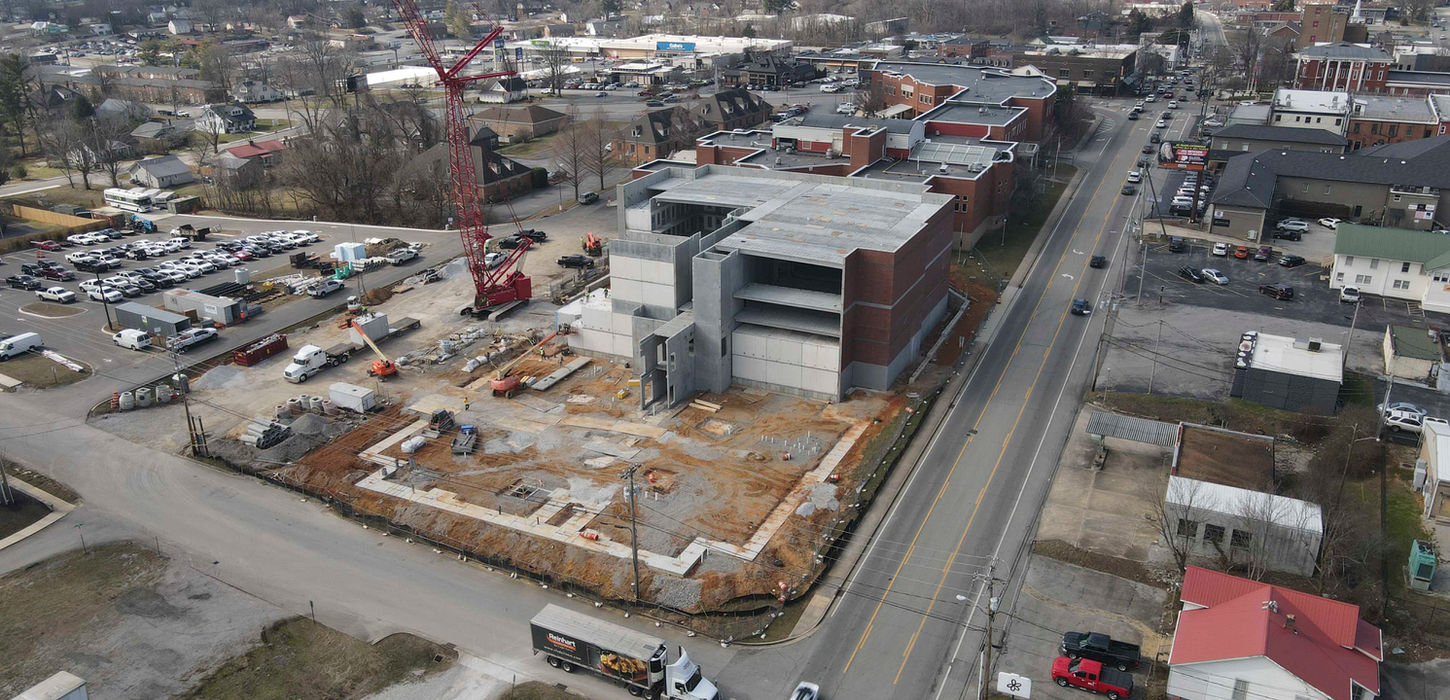Putnam County Jail
Located on an urban, 5-acre site in downtown Cookeville, TN, this expansion of the Putnam County Jail featured the phased construction of an 800-bed expansion to alleviate overcrowding (and prevent the loss of state certification) along with the complex design of multiple additions to the existing Justice Center. These additions, totaling 170,000 SF, also included a connector bridge to link the new housing unit with the sheriff's office, jail, and court facilities. They also featured adaptive reuse and brownfield redevelopment strategies.
CHALLENGE
Located in a dense urban area with limited parking, the Justice Center was built in the early 1990s on a former industrial site – now considered a Brownfield site – and its expansion faced initial setbacks when work was halted after petroleum hydrocarbon odors were detected during geotechnical borings. The project also had to navigate site grading, varied topography, and environmental issues. Additionally, there were community concerns over a correctional facility going up near an elementary school and local businesses, as well as questions concerning the effect its visitors would have on downtown parking demands.
SOLUTION
Upon detecting the petroleum hydrocarbon odors, the TTL environmental team began an immediate assessment and environmental remediation on the former industrial site. In collaboration with the Tennessee Department of Environment and Conservation, the project was enrolled into the Voluntary Oversight and Assistance Program (VOAP) to secure future legal relief from environmental hazards and liability protection for Putnam County post-cleanup. The geotechnical team conducted multiple studies to inform deep pile foundation design, and all soil removal and disposal was monitored to maintain state compliance during grading operations. A limited Phase II Environmental Site Assessment and characterization study also were part of the approval process for the VOAP.
Considering the project's proximity to an elementary school, TTL took a sensitive approach and engaged with the public to demonstrate how the building would integrate into the neighborhood. The Sheriff’s Department also addressed security concerns related to the processing and holding of inmates to reassure the community.


